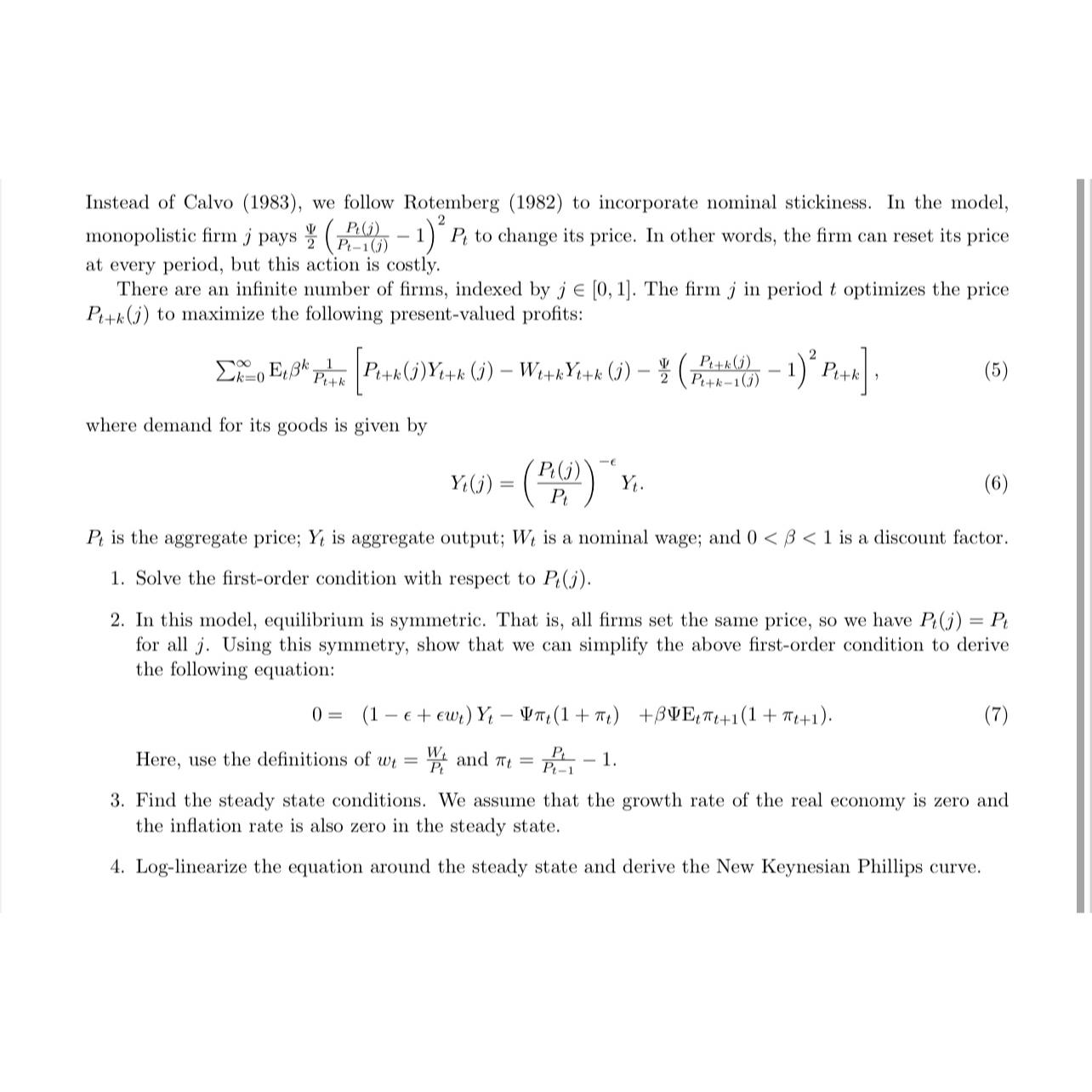Answered step by step
Verified Expert Solution
Question
1 Approved Answer
Instead of Calvo (1983), we follow Rotemberg (1982) to incorporate nominal stickiness. In the model, monopolistic firm jpays (P-1) P, to change its price.

Instead of Calvo (1983), we follow Rotemberg (1982) to incorporate nominal stickiness. In the model, monopolistic firm jpays (P-1) P, to change its price. In other words, the firm can reset its price at every period, but this action is costly. There are an infinite number of firms, indexed by je [0, 1]. The firm j in period t optimizes the price Pt+k(i) to maximize the following present-valued profits: Pt+ k(j) X=0 - 1) Pirk], *Pour [P+k(1)Ye+k (j) W+kYe+k (1) (P4-10) B63 P4 P where demand for its goods is given by Yi(j) = (PL)) Pt is the aggregate price; Y, is aggregate output; W, is a nominal wage; and 0 < 3 < 1 is a discount factor. 1. Solve the first-order condition with respect to Pt(j). Y. 0= (1 + eur) Y - ITt (1+) +BYEtt+1(1+T+1). P Here, use the definitions of wt=W and t = Pt-1 (5) 2. In this model, equilibrium is symmetric. That is, all firms set the same price, so we have Pt(j) = Pt for all j. Using this symmetry, show that we can simplify the above first-order condition to derive the following equation: 1. (6) (7) 3. Find the steady state conditions. We assume that the growth rate of the real economy is zero and the inflation rate is also zero in the steady state. 4. Log-linearize the equation around the steady state and derive the New Keynesian Phillips curve.
Step by Step Solution
★★★★★
3.34 Rating (157 Votes )
There are 3 Steps involved in it
Step: 1
To solve the given model and derive the New Keynesian Phillips curve lets go through the steps 1 Sol...
Get Instant Access to Expert-Tailored Solutions
See step-by-step solutions with expert insights and AI powered tools for academic success
Step: 2

Step: 3

Ace Your Homework with AI
Get the answers you need in no time with our AI-driven, step-by-step assistance
Get Started


